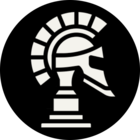Hi,
I would like to convert an image symbol from Esri CIM JSON to AutoCAD DWG format.
The JSON file looks like this:
{
"type": "CIMPointSymbol",
"symbolLayers": [
{
"type": "CIMCharacterMarker",
"enable": true,
"anchorPoint": {
"x": 0,
"y": 0,
"z": 0
},
"anchorPointUnits": "Relative",
"dominantSizeAxis3D": "Y",
"offsetX": -3.3333333333333335,
"size": 5.555555555555556,
"billboardMode3D": "FaceNearPlane",
"characterIndex": 85,
"fontFamilyName": "Tahoma",
"fontStyleName": "Regular",
"fontType": "TTOpenType",
"scaleX": 1,
"symbol": {
"type": "CIMPolygonSymbol",
"symbolLayers": [
{
"type": "CIMSolidStroke",
"enable": true,
"capStyle": "Round",
"joinStyle": "Round",
"lineStyle3D": "Strip",
"miterLimit": 4,
"width": 0,
"height3D": 1,
"anchor3D": "Center"
:
:
],
"haloSize": 1,
"scaleX": 1,
"angleAlignment": "Display"
}
I need help in how FME JSON transformers are to be configured or set in order to save the image symbol as in AutoCAD DWG/DXF format.
Many thanks in advance,
Willy






